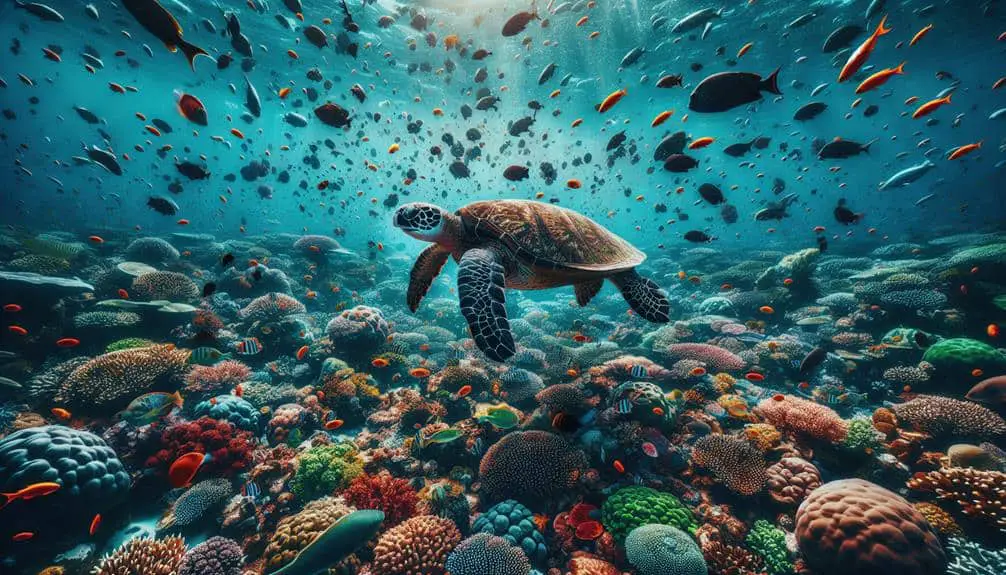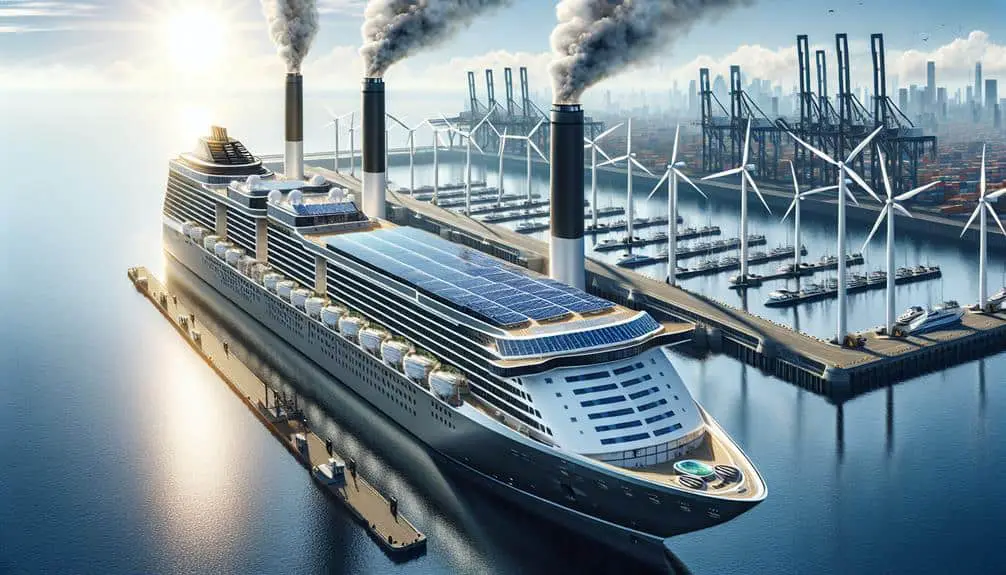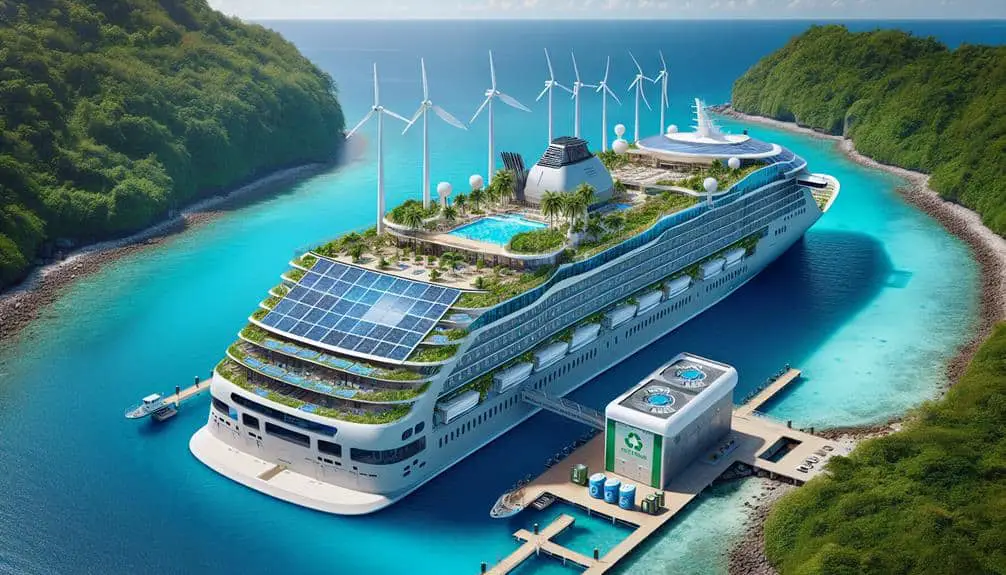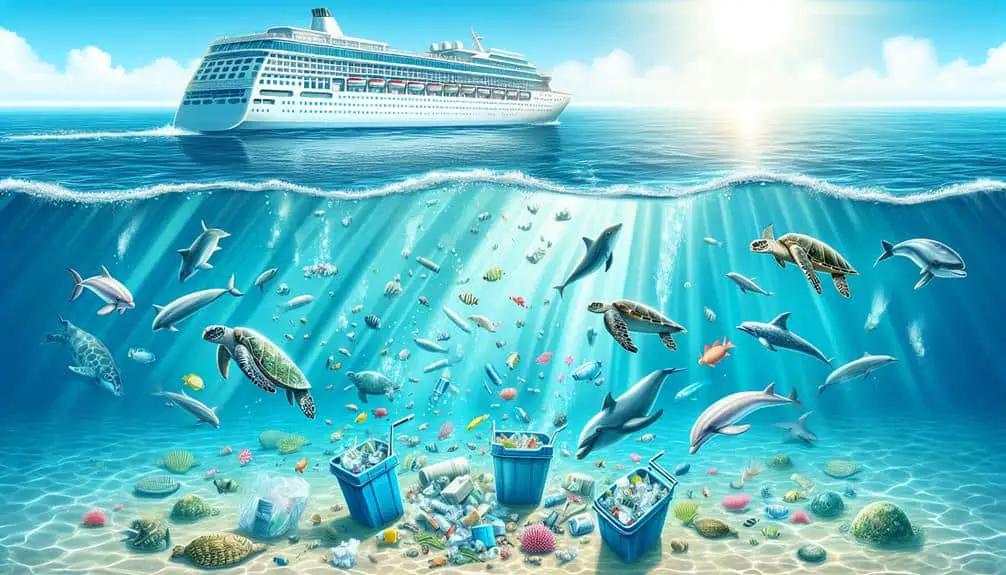When cruising, ensure marine life preservation by implementing Marine Protected Areas for local stewardship. Utilize advanced technologies on ships to reduce emissions and waste discharge substantially. Participate in educational workshops and tours to learn about marine conservation onboard. Support sustainable tourism with eco-friendly initiatives and partnerships. Collaborate with marine research institutions to aid in monitoring and conservation efforts. Your contribution is vital for the health of marine ecosystems. Act responsibly and conscientiously during your cruise adventures for a positive impact on our oceans.
Key Points
- Implement Marine Protected Areas along cruise routes.
- Utilize advanced technologies to minimize cruise ship pollution.
- Educate passengers on marine conservation through workshops and tours.
- Support local sustainable tourism initiatives for marine conservation.
- Collaborate with marine research institutions to aid in conservation efforts.
Implementing Marine Protected Areas
To safeguard marine ecosystems and species, establishing designated Marine Protected Areas (MPAs) is essential in guaranteeing their long-term conservation and sustainability. Ecotourism initiatives within MPAs can provide economic benefits while minimizing negative impacts on marine life. Community involvement in MPA management is critical for fostering local stewardship and support for conservation efforts. Stakeholder engagement, including collaboration with government agencies, NGOs, and local communities, is important for the success of MPAs.
Enforcement measures play a key role in upholding MPA regulations and protecting marine biodiversity. Utilizing technology such as satellite monitoring and patrol boats can help deter illegal activities like overfishing and habitat destruction within these areas. Implementing strict guidelines and penalties for violators is necessary to maintain the integrity of MPAs and guarantee compliance with conservation objectives.
Minimizing Cruise Ship Pollution
Minimizing cruise ship pollution involves implementing advanced technologies to reduce emissions and waste discharge into marine environments. Green technology plays a pivotal role in achieving this goal.
Cruise ships are now equipped with systems like exhaust gas cleaning systems, also known as scrubbers, which help remove pollutants from ship emissions before they're released into the air. Additionally, ships are increasingly using low-sulfur fuels to reduce sulfur dioxide emissions that contribute to air pollution.
Waste management onboard is another key aspect of pollution reduction. Advanced wastewater treatment systems are employed to treat sewage and gray water before it's discharged back into the ocean. Solid waste is segregated, recycled where possible, and the remaining waste is properly disposed of at port facilities.
Educating Passengers on Marine Conservation
How can passengers on cruise ships actively contribute to marine conservation efforts during their voyages? One effective way is through education. By participating in interactive workshops and utilizing educational materials provided onboard, passengers can gain a deeper understanding of marine conservation issues and learn how they can make a positive impact.
Here are four ways passengers can engage in marine conservation education:
- Attend Interactive Workshops: Join workshops led by marine biologists or conservationists to learn about marine ecosystems, threats to marine life, and conservation practices.
- Visit Onboard Educational Centers: Explore onboard educational centers that provide information on marine species, habitats, and the importance of conservation efforts.
- Participate in Guided Tours: Take part in guided tours that focus on marine conservation, such as visits to local conservation projects or marine protected areas.
- Engage with Educational Materials: Read brochures, watch documentaries, or participate in hands-on activities that highlight the significance of marine conservation and sustainable practices.
Supporting Local Sustainable Tourism
Supporting local sustainable tourism involves actively engaging with community initiatives that prioritize environmental conservation and cultural preservation. Local partnerships play a vital role in fostering sustainable tourism practices by collaborating with communities to protect natural resources and promote cultural heritage. By forming alliances with local businesses, organizations, and residents, cruise adventures can contribute to the economic well-being of communities while minimizing negative impacts on the environment.
Community engagement is key to ensuring that tourism activities benefit local populations and ecosystems. Through initiatives like beach clean-ups, tree planting projects, and cultural exchanges, cruise operators can actively involve communities in conservation efforts. By working together with local stakeholders, cruise adventures can create meaningful experiences for passengers that showcase the importance of preserving marine life and supporting sustainable tourism practices.
Collaborating With Marine Research Institutions
To further enhance your efforts in promoting marine conservation and sustainable tourism, consider establishing collaborations with reputable marine research institutions. By forming research partnerships, you can contribute to the scientific understanding and preservation of marine ecosystems while offering unique educational opportunities to your guests. Here are four key benefits of collaborating with marine research institutions:
- Access to Cutting-Edge Research: Partnering with marine research institutions grants you access to the latest scientific findings and technologies, allowing you to stay informed about critical issues affecting marine environments.
- Opportunities for Data Collection: Through collaboration, you can participate in data collection efforts, aiding in the monitoring of marine species, habitats, and environmental changes.
- Enhanced Guest Experiences: Involving guests in research activities can enrich their cruise experience, fostering a deeper connection to marine life and conservation efforts.
- Contribution to Conservation Efforts: Your partnership can directly contribute to conservation initiatives by supporting research projects aimed at protecting marine biodiversity and ecosystems.
Frequently Asked Questions
Are There Any Opportunities for Passengers to Participate in Hands-On Conservation Activities During the Cruise?
While onboard, you can actively engage in marine cleanups and coral restoration efforts. Immerse yourself in these hands-on opportunities to contribute to marine conservation during your cruise adventure, making a meaningful impact on the environment.
How Do Cruise Companies Ensure That Their Supply Chains Are Sustainable and Do Not Harm Marine Ecosystems?
To guarantee sustainable supply chains and safeguard marine ecosystems, cruise companies implement eco-friendly practices like sourcing local goods, reducing waste, and supporting responsible tourism. These measures help minimize impact and promote conservation efforts.
What Measures Are in Place to Prevent Accidental Collisions Between Cruise Ships and Marine Wildlife?
To prevent accidental collisions between cruise ships and marine wildlife, marine sanctuaries use advanced monitoring technology. Wildlife corridors are mapped to adjust cruise routes. This guarantees safe passage for both ships and marine life, minimizing harm and preserving ecosystems.
How Are Local Communities Involved in the Decision-Making Process for Marine Conservation Efforts in the Areas Where Cruises Operate?
Local engagement in marine conservation efforts involves community partnerships. By involving locals in decision-making processes, cruises guarantee that conservation measures align with community needs, fostering a sense of ownership and responsibility towards preserving marine ecosystems for future generations.
Are There Any Initiatives in Place to Reduce Plastic Waste Generated by Passengers and Crew on Board Cruise Ships?
To diminish plastic waste on cruise ships, initiatives like plastic recycling programs and waste reduction strategies are implemented. These eco-friendly practices help safeguard marine life. Encouraging passengers and crew to participate guarantees a cleaner environment for all.




